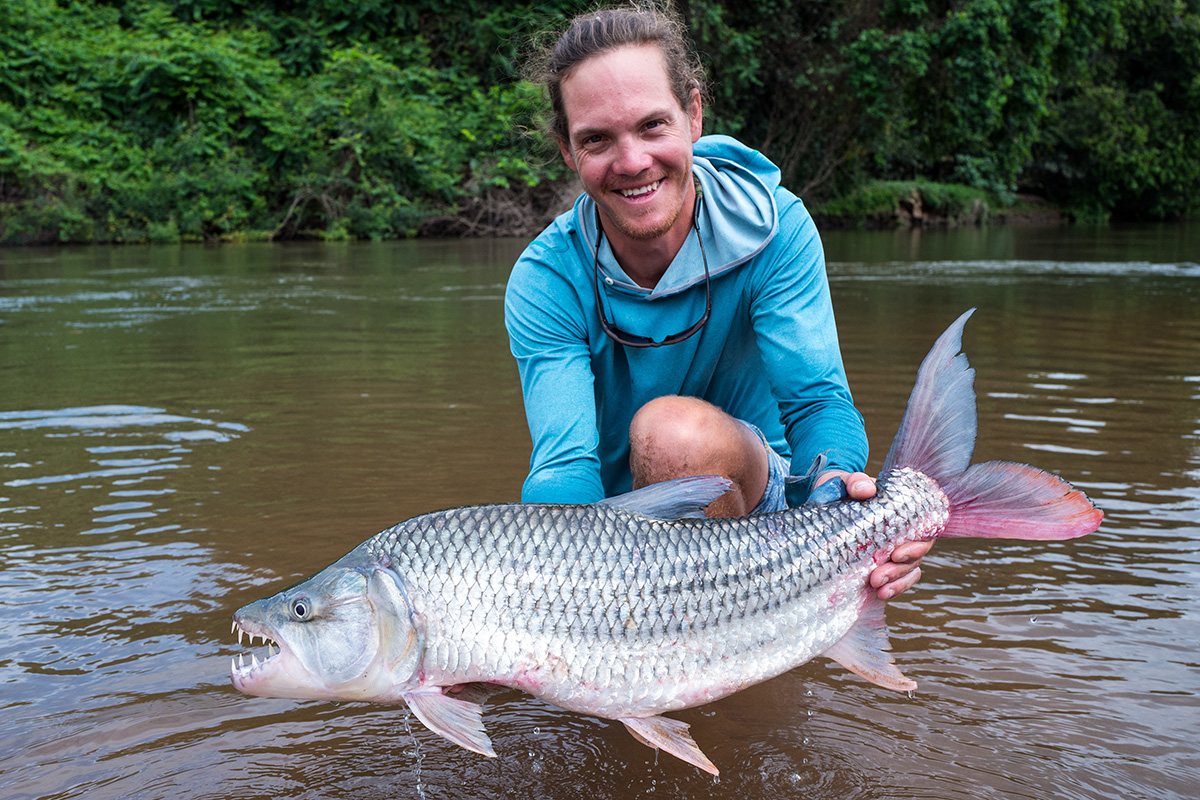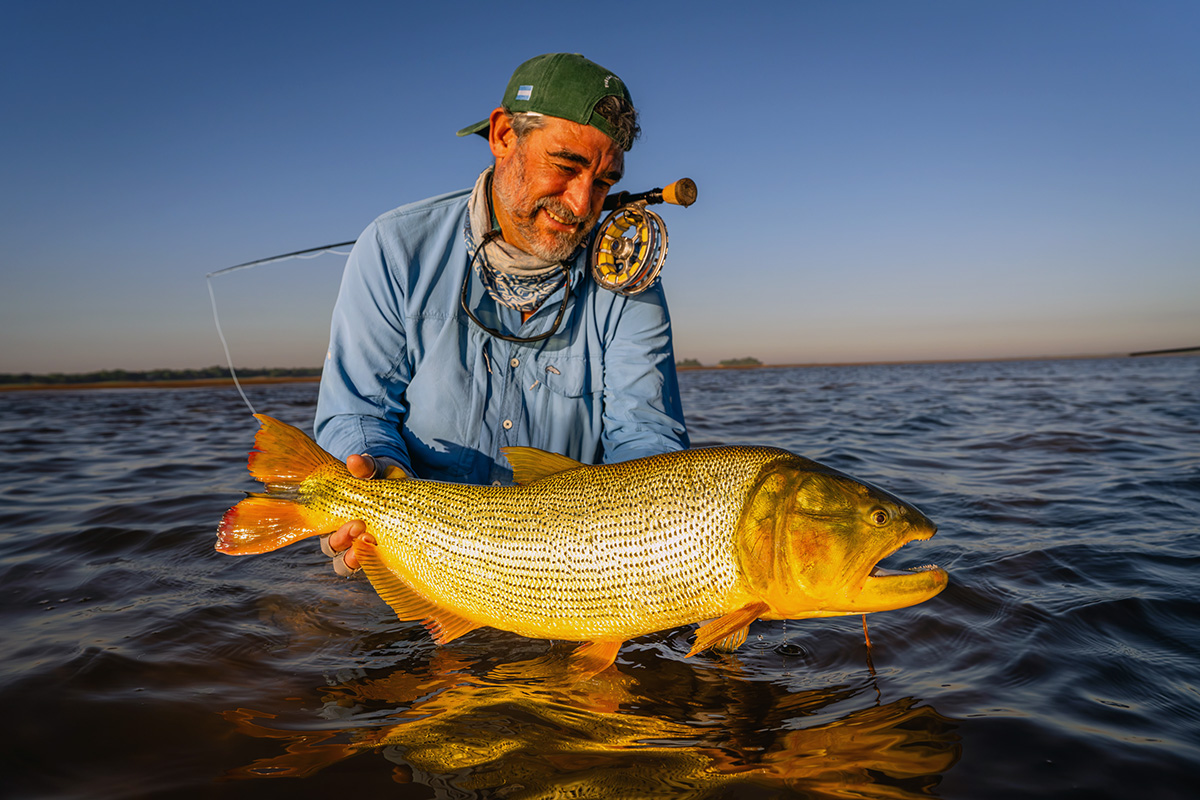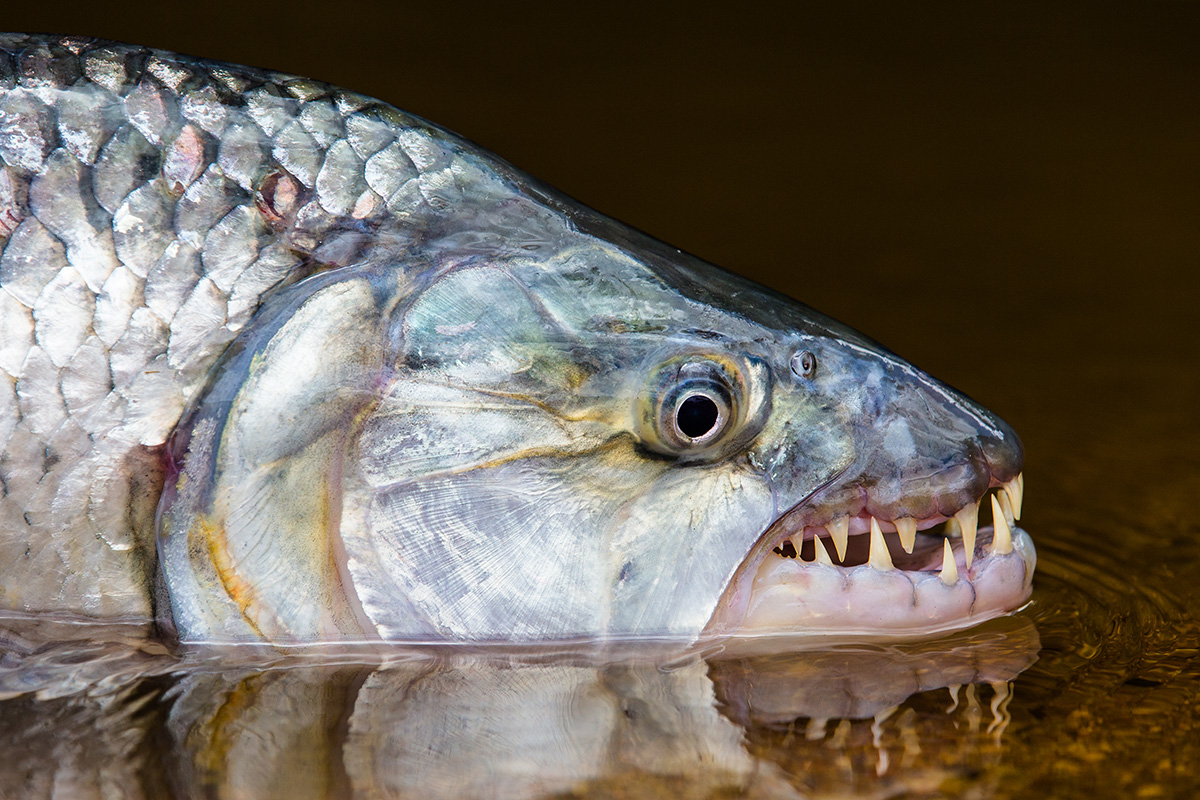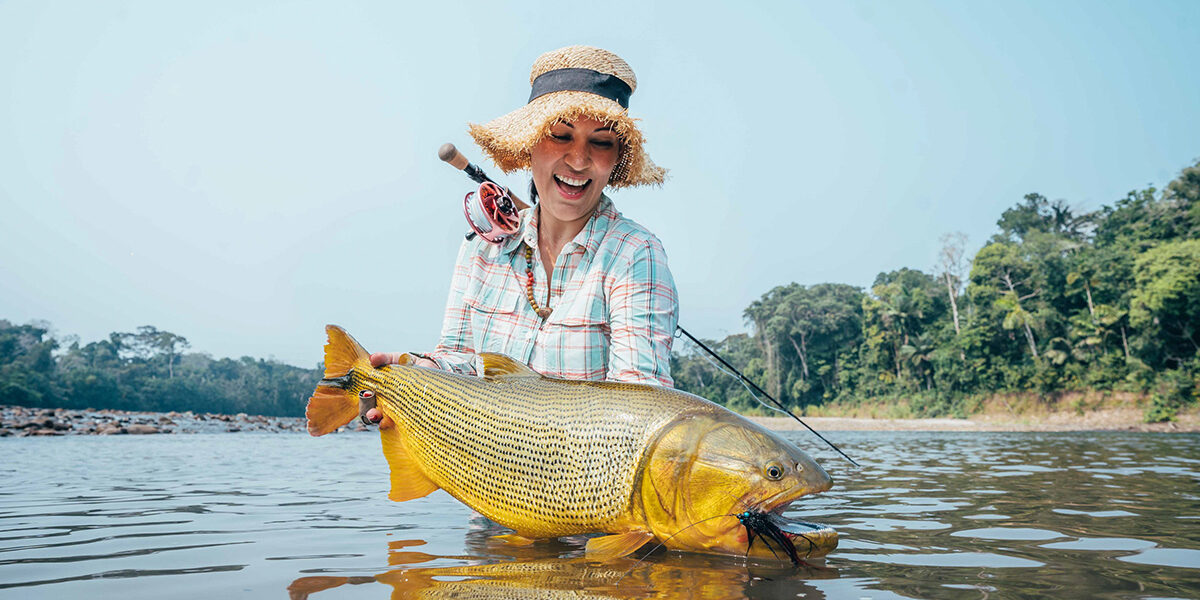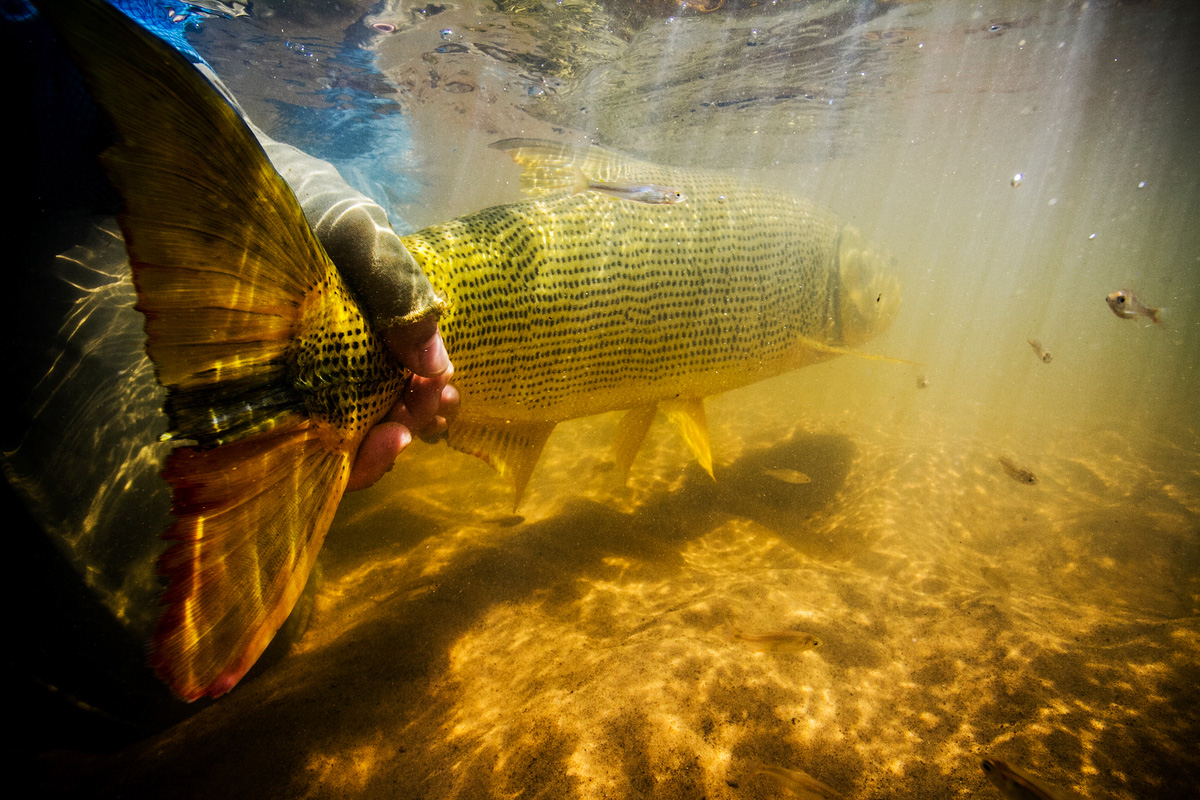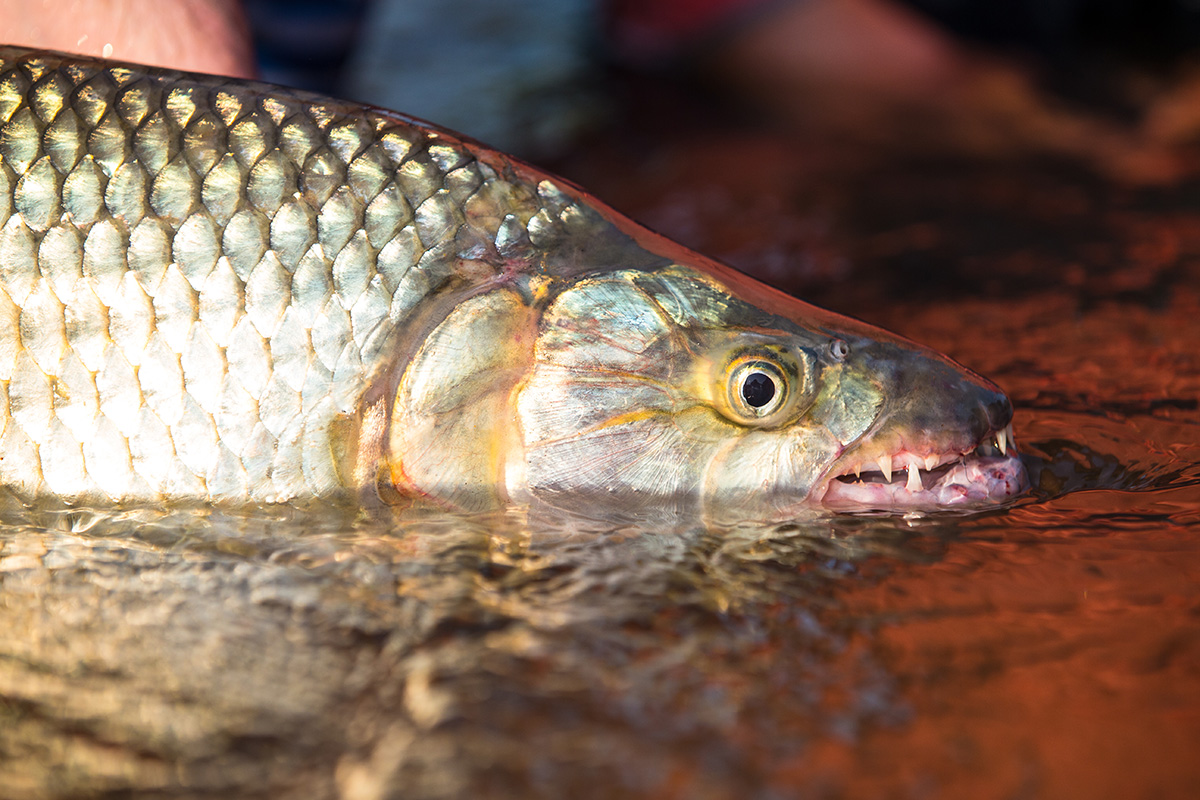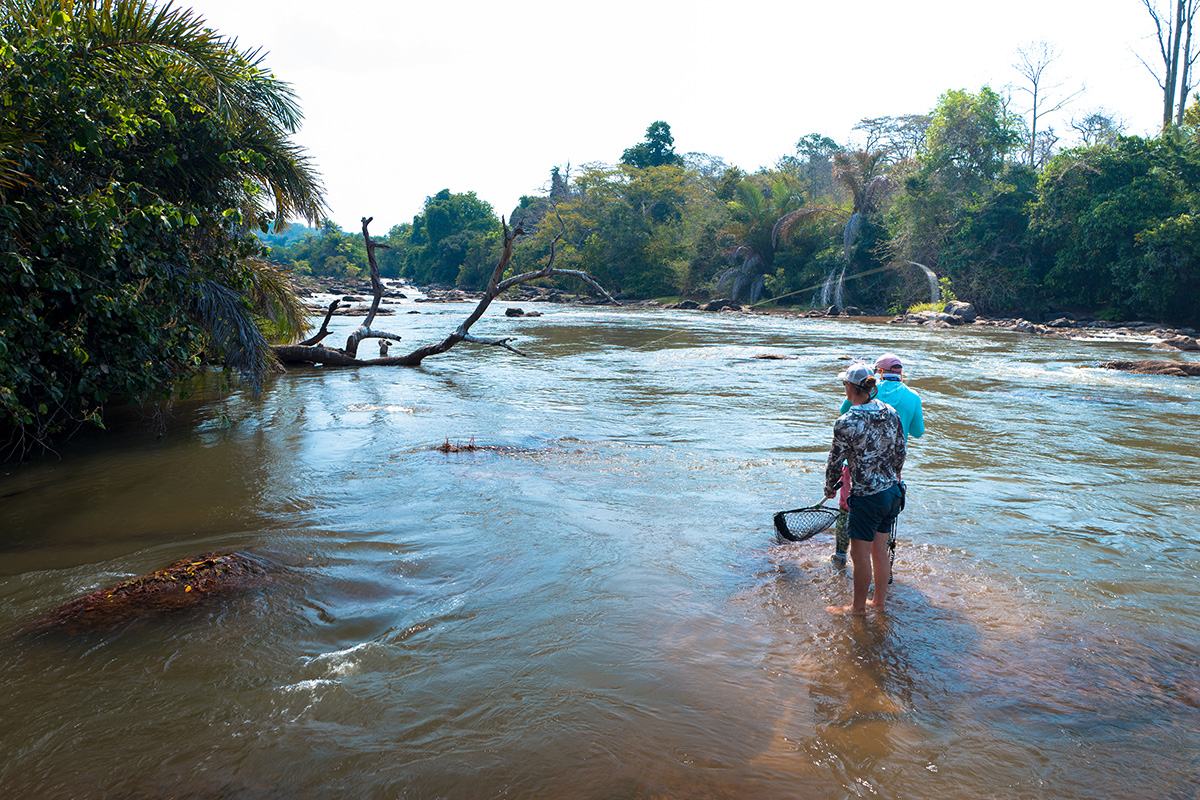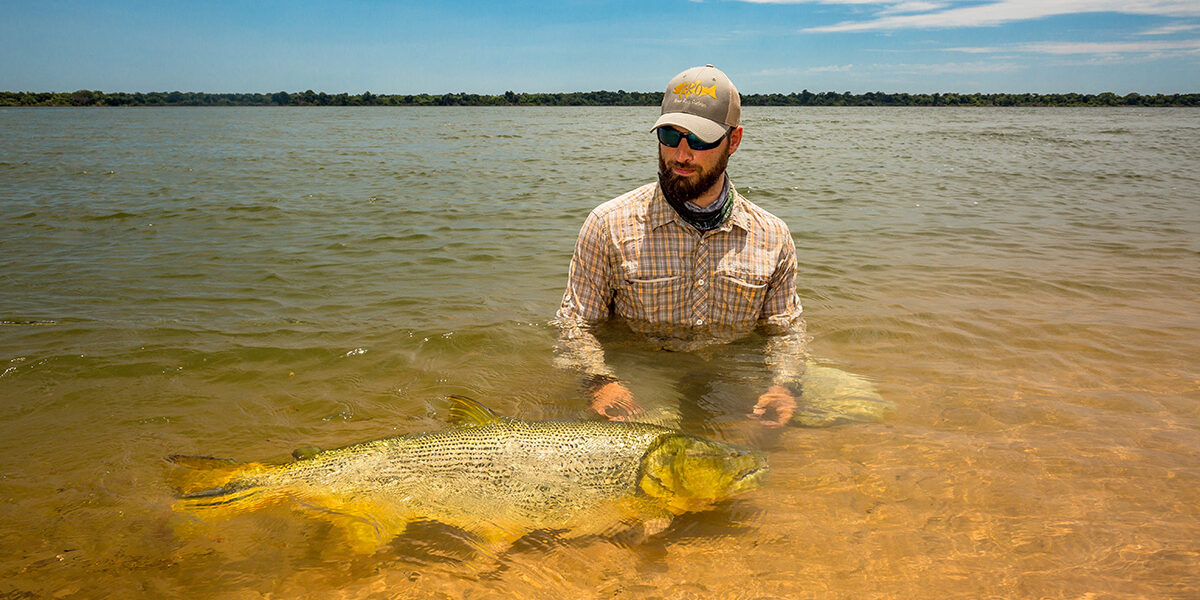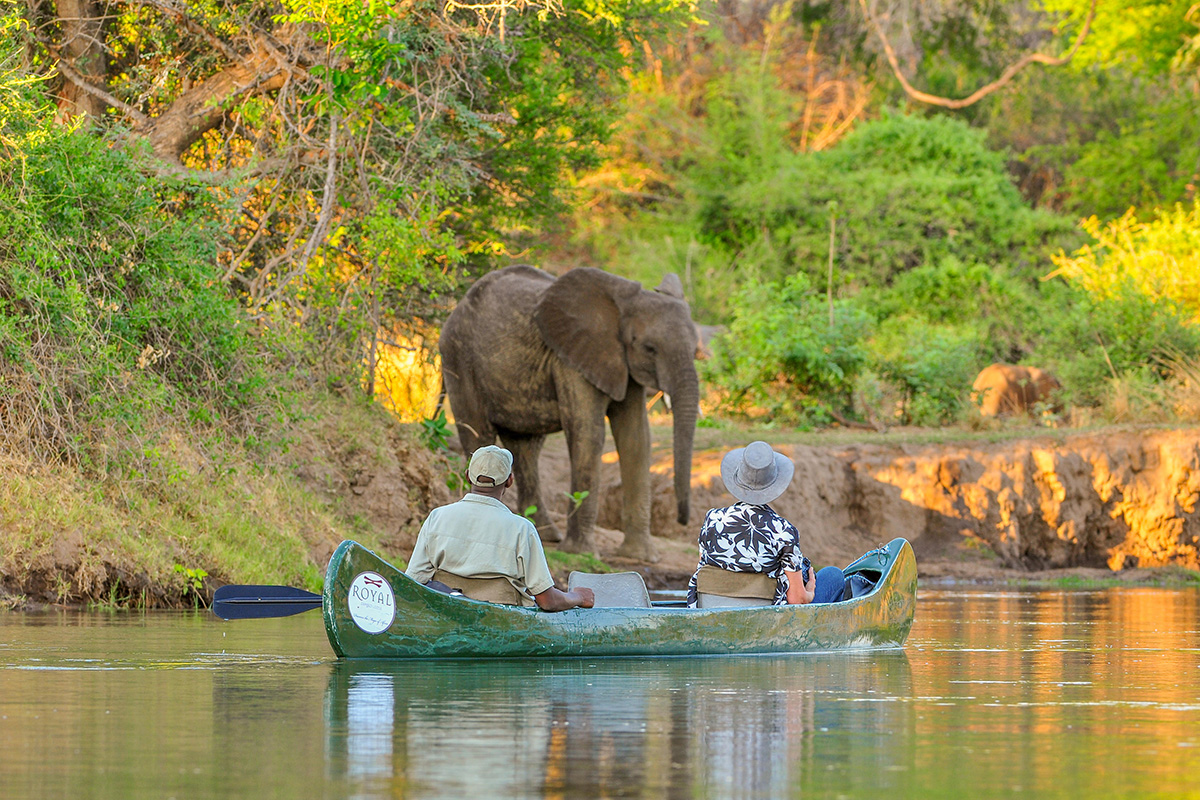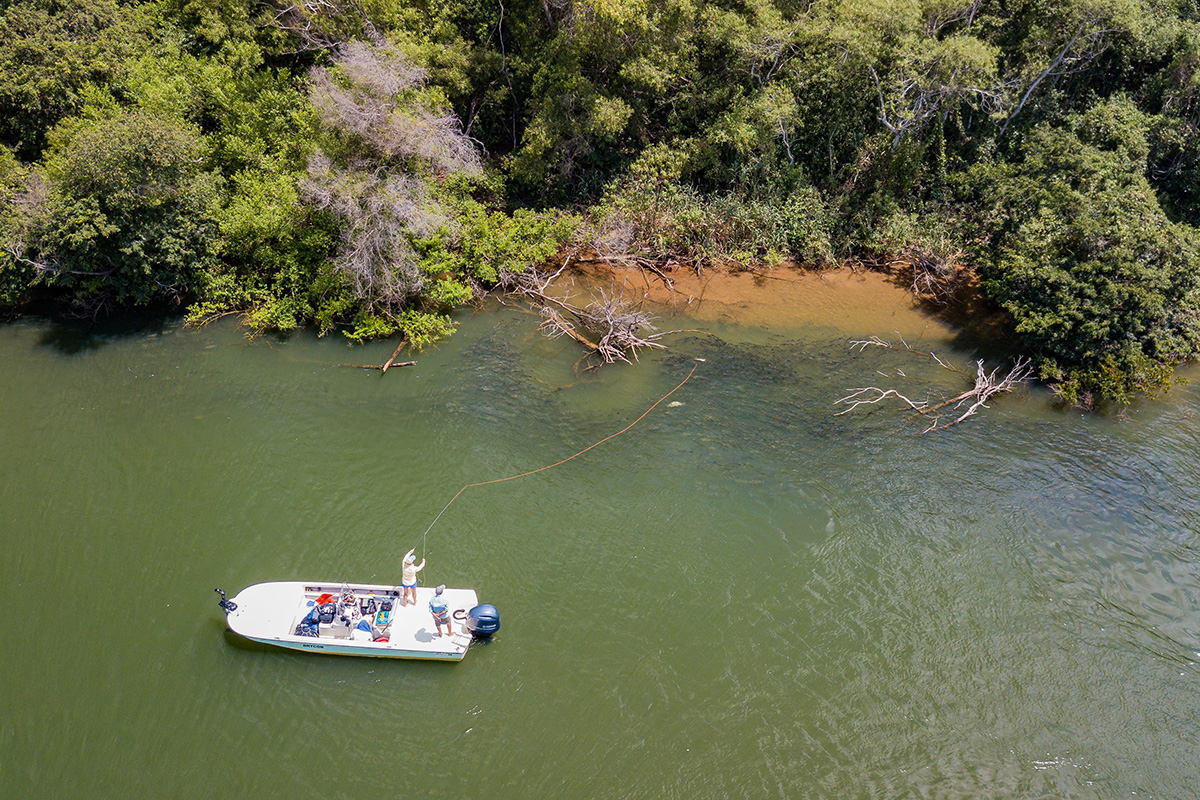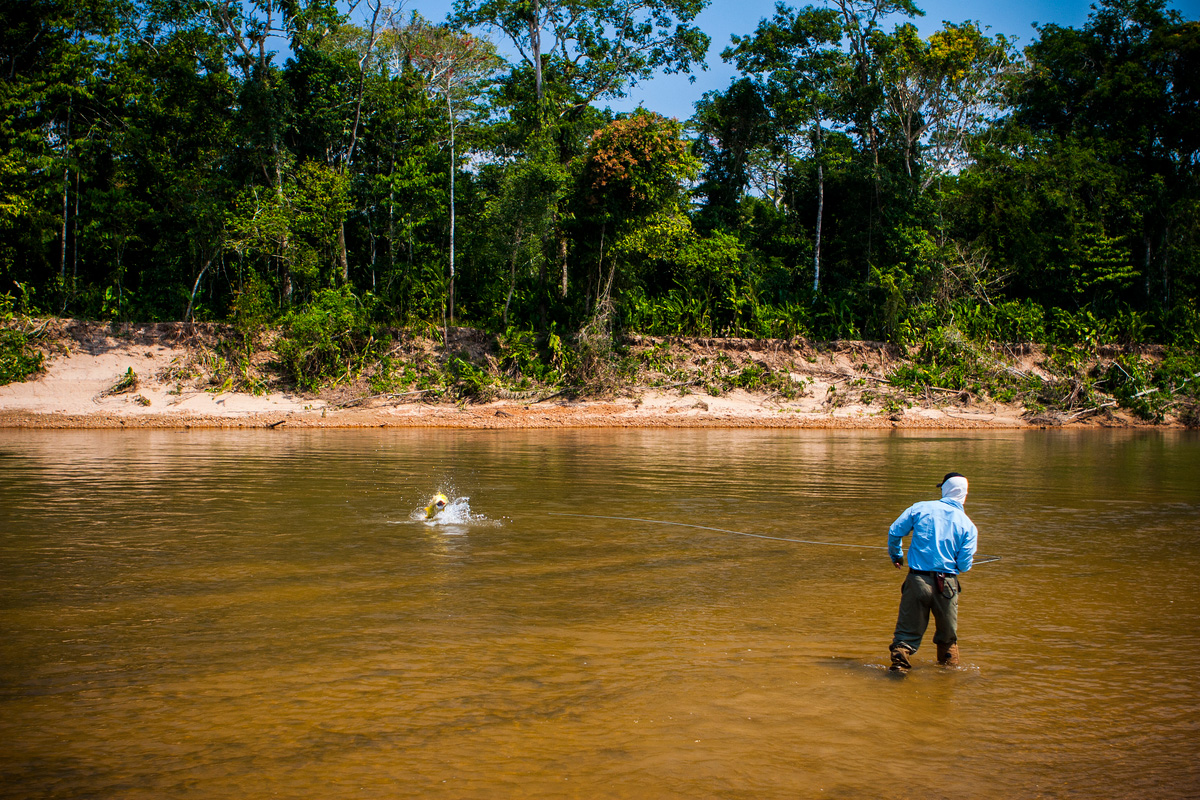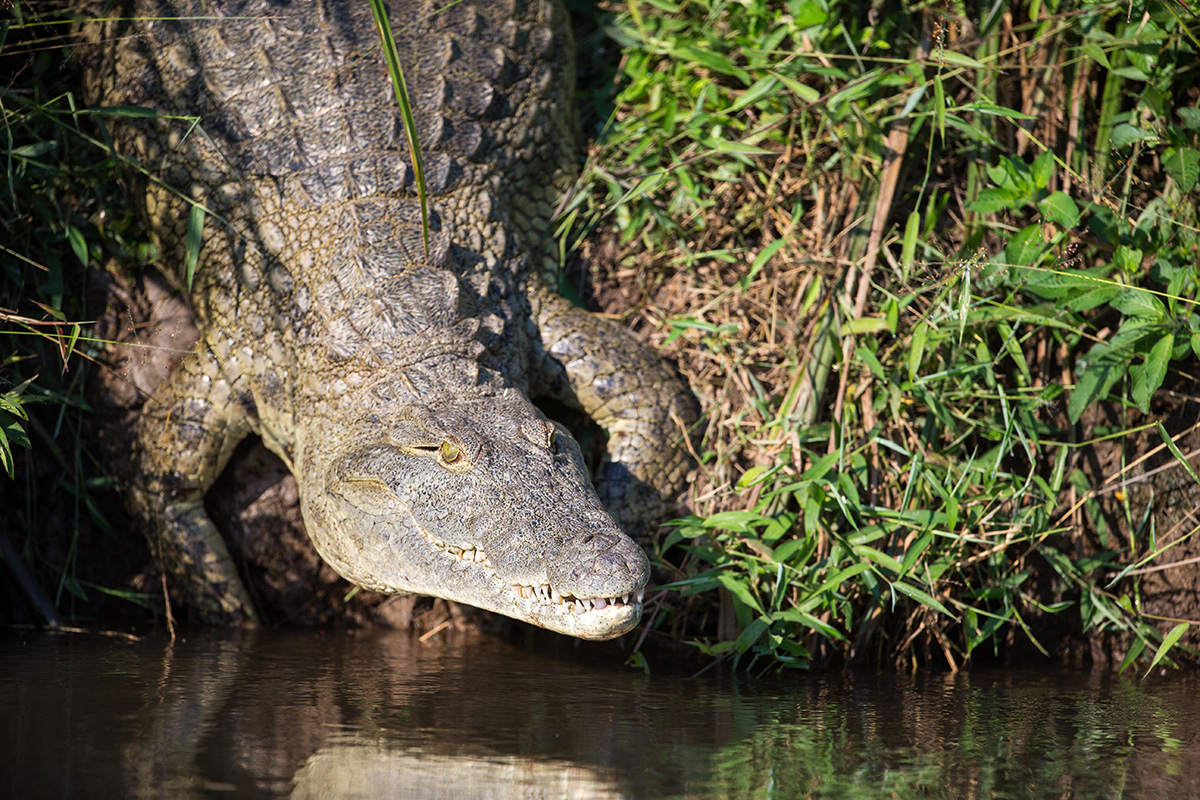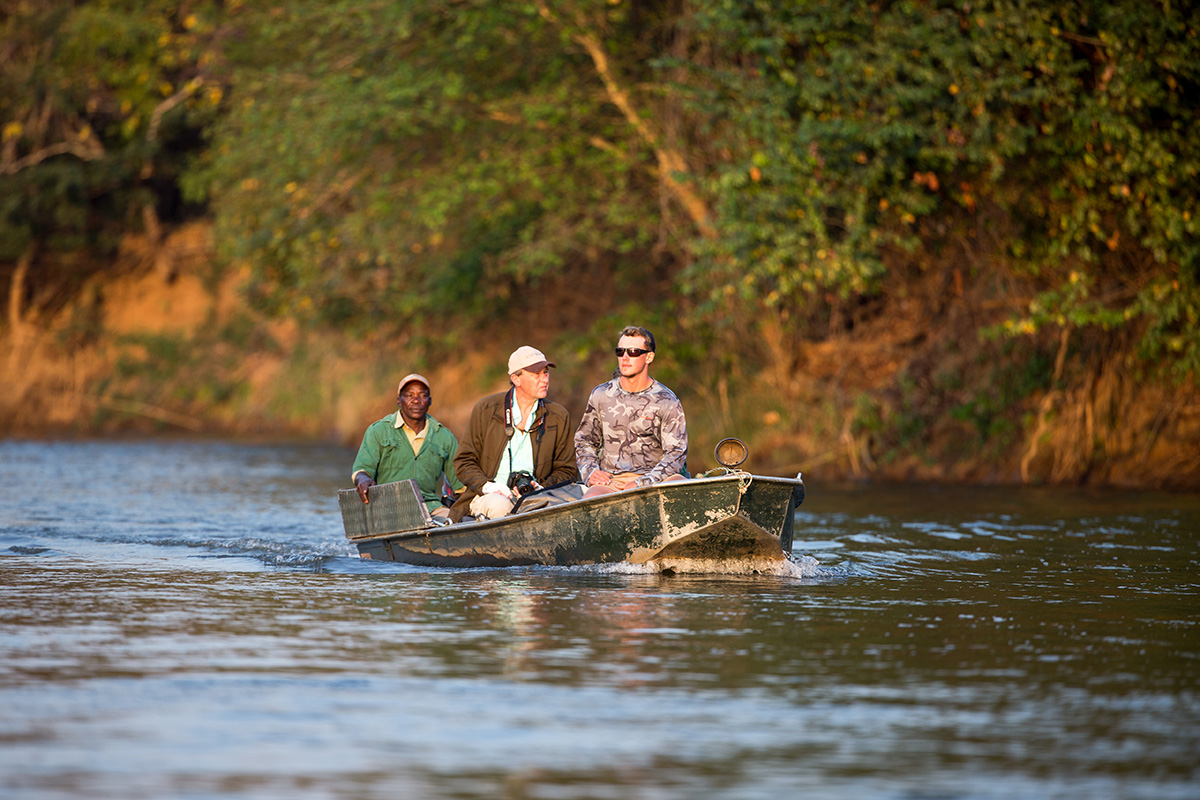Golden Dorado or Tiger Fish? How They Compare, and Why You Should Fish Both
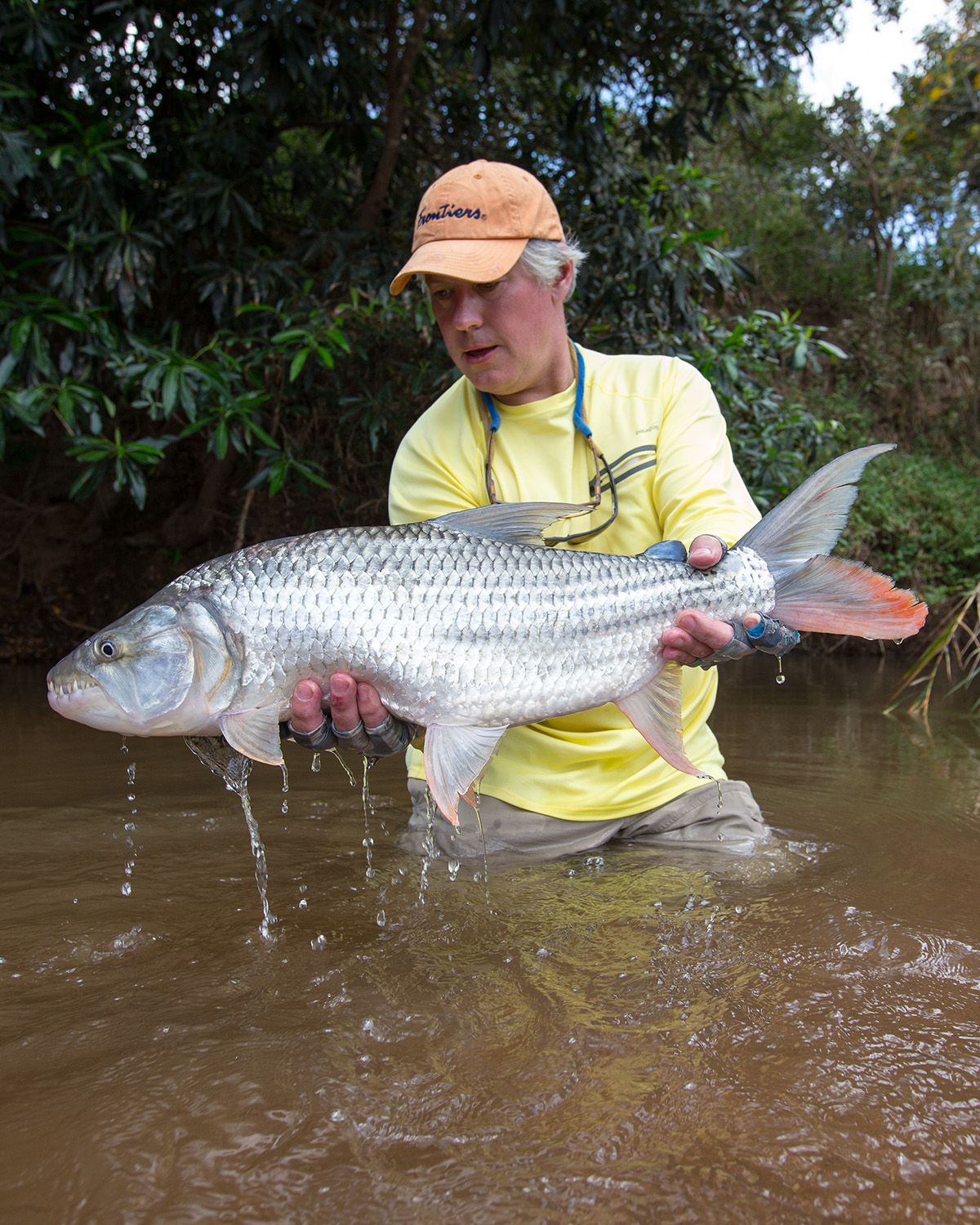
If you’ve already traveled to South America in pursuit of Golden Dorado, odds are high that Tiger Fish are next on your fly-fishing hit list—even if you don’t know it yet. Golden Dorado and Tiger Fish are two of the most aggressive freshwater gamefish on the planet. If you’ve never chased them, think of it like streamer fishing from a drift boat for big trout or musky—fast casts to structure, heavy flies, explosive eats. In clear water, sight-fishing feels closer to the flats, with visual shots, moving targets, and fast strips. It’s redfish or juvenile tarpon—but with sharper teeth and zero hesitation.
The setup might feel familiar. But biologically and behaviorally, these species are very different.
In our latest episode of The Field Experience, we sat down with longtime Frontiers expert Roddy Hall to discuss all things Tiger Fish. Roddy has fished for these aggressive fish across the rivers and lakes of southern Africa for more than two decades, and he offers a rare perspective that blends both biological insight and firsthand experience.
This article builds on that conversation in The Field Experience, giving you a side-by-side comparison of Golden Dorado and Tiger Fish—not just how they look and fight, but how they behave, when to target them, and what it takes to land one. Whether you’re planning your next trip or just curious about the differences, here’s what you need to know.
Listen to the full episode of The Field Experience podcast here.
Striking Looks, Violent Takes
At first glance, both Tiger Fish and Golden Dorado seem very similar to one another. Bright gold scales, oversized jaws, bone-crushing strikes. They’re apex predators in their respective waters, and they demand fast retrieves, strong wire, and serious commitment.
But while Dorado have become a favorite of traveling anglers over the past decade, Tiger Fish are still a bit of a mystery. According to Roddy, that’s changing—especially among seasoned anglers looking for their next fix.
“If you’ve fished for Dorado and enjoyed it, Tiger Fish are a natural next step,” he says. “It’s different enough to be exciting, but familiar enough that your instincts carry over.”
Anatomy & Weaponry
- Golden Dorado
- Broad head, muscular body, large jaws, and sharp, interlocking teeth.
- Powerful tail enables short bursts of speed.
- Golden scales with black spots and red-tipped fins make them one of the most visually striking freshwater species.
- Tiger Fish
- Slender, torpedo-shaped body built for speed.
- Distinctive long, protruding canine-like teeth—visible even when the mouth is closed.
- Silver coloration with dark vertical bars and fiery red or orange tail and fins.
The Tiger Fish’s teeth are arguably more intimidating, while Dorado rely on brute force and headshakes once hooked.
Hunting Behavior
- Golden Dorado
- Often hunts in packs, especially during feeding frenzies around baitfish schools.
- Known to ambush prey near structure and in current seams.
- Uses explosive bursts of speed to attack prey from below or the side, often disorienting or killing with the initial strike.
- Golden Dorado often follow flies, inspecting before committing. They may slash, turn, or even chase the fly to the boat.
- Golden Dorado feed steadily in warmer months and are active year-round in some regions. They’ll eat topwater, subsurface, and swung flies alike.
- Golden Dorado love woody debris, rock piles, and cutbanks.
- Tiger Fish
- Opportunistic ambush predator, often attacking from submerged cover or deep channels.
- Typically solitary or in small groups, depending on water conditions.
- Strikes with precision and then immediately jumps, attempting to dislodge the fly or lure.
- Tiger Fish hit like a thrown brick. The take is immediate and violent. Many anglers lose fish simply because they weren’t ready.
- The species are more seasonally moody. They feed most aggressively when water levels are lower, clearer, and warmer. Cold or dirty water shuts them down, particularly for fly anglers.
- Tiger Fish favor submerged logs, reed channels, drop-offs, and underwater ledges. Fishing near structure is critical, but also means high risk of snags.
Both fish are reactive hunters, but while Dorado rely on teamwork and power, Tiger Fish are quick, efficient, and violent solo attackers.
Diet
- Golden Dorado
- Primarily piscivorous—feeds on baitfish such as sabalo and other river minnows.
- Occasionally preys on smaller aquatic creatures and even birds near the water surface.
- Known for following bait migrations seasonally.
- Tiger Fish
- Also strictly piscivorous, feeding on tilapia, minnows, and juvenile catfish.
- In flooded systems, they will take advantage of bait-rich backwaters and feeder channels.
- Their diet is more varied depending on river ecology, but always fish-based.
While both species are fish-eaters, Dorado are often more aggressive during seasonal runs and migrations, whereas Tiger Fish rely on ambush and speed throughout the year.
Habitat & Environment: Jungle vs. Savannah
Golden Dorado are native to warm subtropical rivers and marshes in Argentina, Uruguay, Paraguay, and freestone mountain rivers in Bolivia. Fisheries like the Paraná River offer big water, islands, and woody structure. The Iberia Marsh is similar to the USA Everglades, and channels, inland lakes, and flats are the order of the day. In Bolivia, clear-water sight fishing for marauding Dorado, herding Sabalo, or holding in pocket water welcomes anglers. You’re dealing with subtropical heat, dense foliage, and usually fishing from flats and Carolina skiffs or wading.
Tiger Fish, in contrast, are found in the rivers and lakes of sub-Saharan Africa—most notably the Zambezi, Okavango Delta, and Mnyera rivers. These are vast, dynamic systems that can be log-jammed, reed-lined, and sometimes downright hostile. You’re navigating crocodile-infested waters, sharing channels with hippos, and scanning for elephants along the bank. This is fishing in its rawest form.
“Tiger fishing is not just about the fish,” Roddy notes. “It’s Africa. The wildlife, the scale, the unpredictability—every part of it reminds you that you’re a long way from home.”
Seasons & Best Times to Fish
For Golden Dorado, prime time varies by region but generally includes:
- Upper Paraná River & Adjoining Marsh Systems, Argentina: October–May
- Middle Paraná River, Argentina: June-October
- Bolivian Jungles: June–November
Tiger Fish, depending on the region, are most active:
- Okavango Delta (Barbel Run): August–October
- Lower Zambezi: September–early November (before rains muddy the water)
- Tanzania (Mnyera/Ruhudji): September–November
- Pongola Dam, South Africa: August–September and again in early winter
As Roddy explained, fly anglers should avoid the rainy season when looking for Tiger Fish. “The rivers turn to chocolate milk, and the fish won’t see or eat a fly.”
Ready to Plan Your Trip?
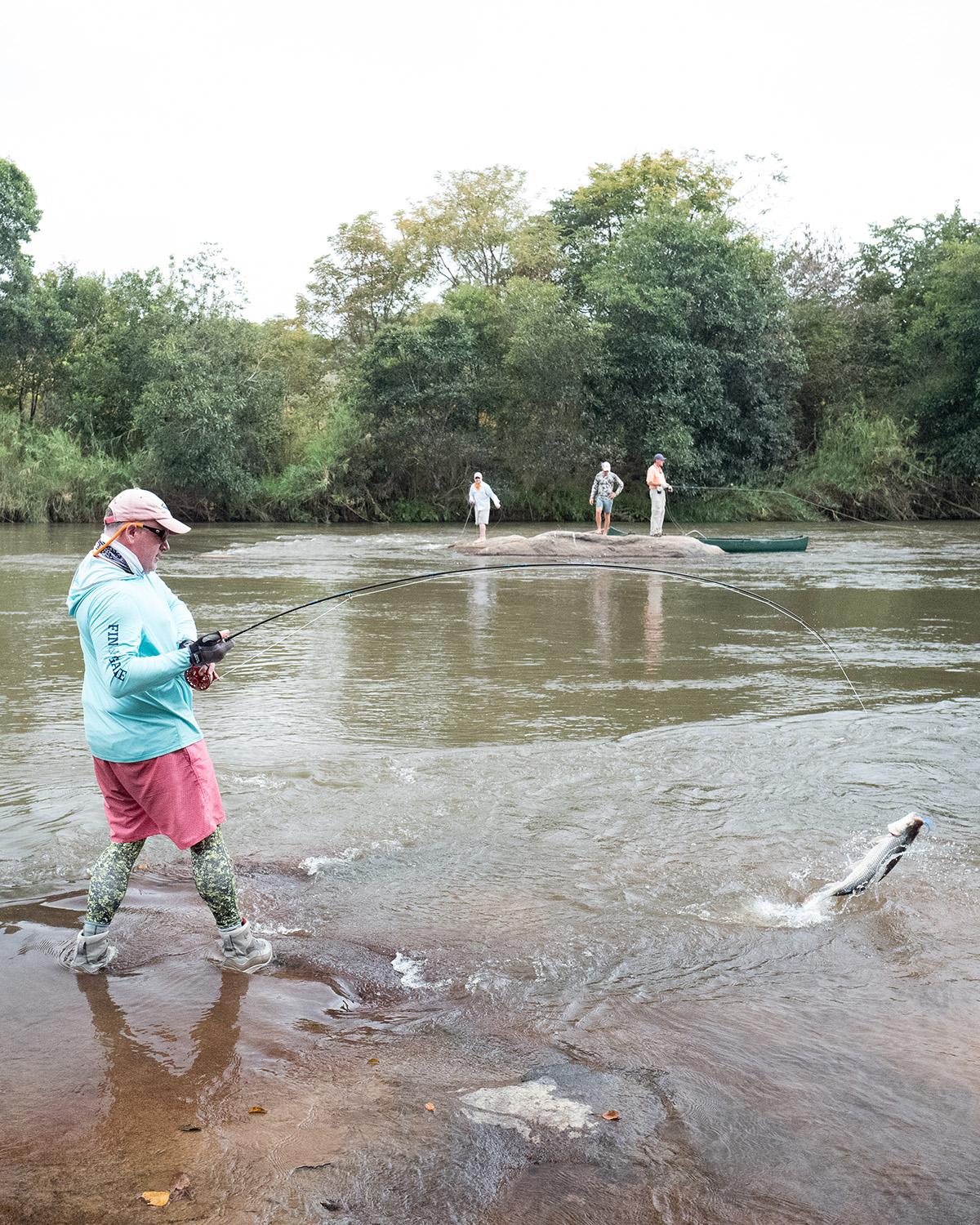
Frontiers offers Tiger Fish trips in Zambia, Tanzania, South Africa, and Botswana, including budget-friendly options and high-end safari combos. Whether you want a family-friendly mix of game viewing and fishing, or a hardcore, fly-only expedition chasing trophies in remote terrain, we can help.
If you’d like to learn more about Tigerfishing in Africa, please contact Roddy Hall or Kathy Schulz.
If you’d like to learn more about Golden Dorado, please contact Hank Ingram.
Listen to the full episode of The Field Experience podcast here.




